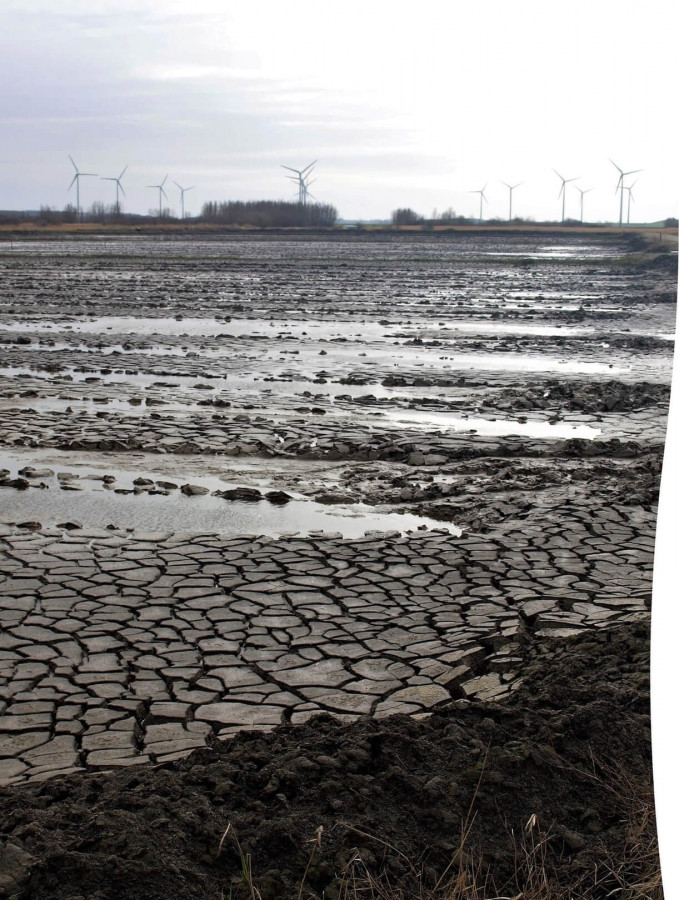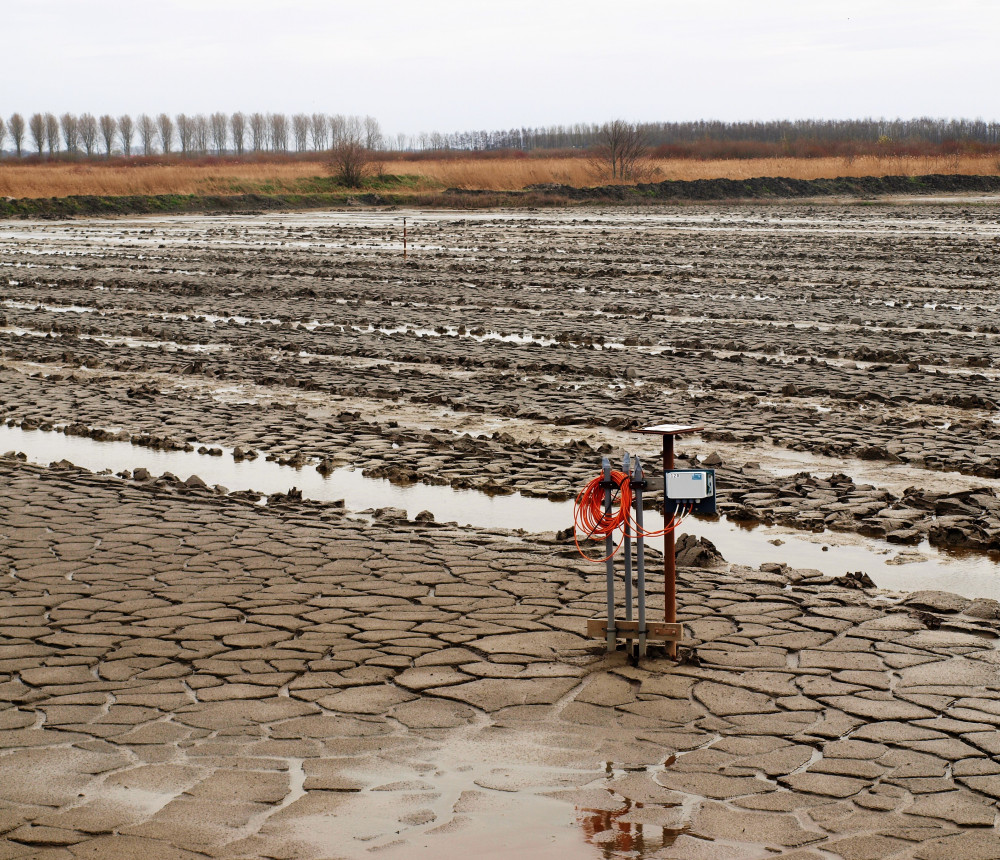Discover all themes and topics
This theme focuses on strategies for managing soil, sediment and water systems through a holistic and integrated lens. It emphasizes the critical functions of soil, sediment and water in ecosystems, the challenges and solutions for soil health in various environments, the impacts of urbanisation and climate change on soil-water dynamics, and the importance of community engagement and innovative technologies for sustainable management.
Theme 1: Soil and Water Systems Management
This theme focuses on strategies for managing soil and water systems through a holistic and integrated lens. It emphasizes the critical functions of soil and water in ecosystems, the challenges and solutions for soil health in various environments, the impacts of urbanisation and climate change on soil-water dynamics, and the importance of community engagement and innovative technologies for sustainable management.
Topic 1.1: Enhancing Ecosystem Services
Discussing the vital role of soil, sediment and water functions in ecosystems, addressing societal challenges and promoting sustainable practices.
- Nutrient cycling and carbon sequestration
- Water filtration and purification
- Soil health definitions, monitoring, challenges and solutions
- Phytomanagement for enhancing ecosystems services
Topic 1.2: Strategies to Landscapes in Transition
Sharing insights on the impacts of urbanisation, restoration strategies, and adaptive management approaches for resilient soil-sediment- water (SSW) systems in dynamic landscapes.
- Impact of urbanisation and land use change on soil-water systems
- Strategies for restoration and rehabilitation of degraded landscapes
- Climate resilience and renewable energy in soil, sediment and water management
Topic 1.3: Integrated Approaches and Collaborative Innovation
Sharing insights on holistic management strategies, from integrated water resource management to collaborative research platforms, engaging communities in developing sustainable soil-sediment-water solutions.
- Integrated water resource management strategies
- Integrated approaches to soil-water-energy nexus
- Collaborative research and experimentation platforms
- Community engagement in developing sustainable solutions
This theme explores the latest advancements and integrated strategies for addressing contaminated environments affected by both persistent, mobile and toxic (PMT) substances, as well as very persistent and very mobile (vPvM) substances. The focus is on innovative technologies, multidisciplinary collaborations, and comprehensive risk assessments to achieve sustainable and effective remediation outcomes.
Theme 2: Innovative Strategies for Sustainable Remediation
This theme explores the latest advancements and integrated strategies for addressing contaminated environments affected by both persistent, mobile and toxic (PMT) substances, as well as very persistent and very mobile (vPvM) substances. The focus is on innovative technologies, multidisciplinary collaborations, and comprehensive risk assessments to achieve sustainable and effective remediation outcomes.
Topic 2.1: Innovative Remediation Technologies for PMT/ vPvM substances
Showcasing innovative and effective remediation strategies for addressing the challenges posed by the range of chemical substances or compounds found in contaminated environments, focusing on both individual and integrated approaches.
Subtopic 2.1.1: Nature-based Solutions
- Ecosystem-based management approaches
- Enhanced natural attenuation approaches
- Wetland restoration and conservation
Subtopic 2.1.2: Environmental Biotechnologies
- Innovative bioremediation strategies
- Engineering biology and environmental engineering for bioremediation applications
- Advancing enzyme-based treatments for pollutant degradation
- Case studies on innovative biotechnological applications
Subtopic 2.1.3: Physicochemical Techniques
- Advanced oxidation processes (AOPs)
- Chemical reduction and stabilization
- Electrochemical remediation
- Adsorption and ion exchange
- Integrated physicochemical techniques for enhanced remediation outcomes
Subtopic 2.1.4: Integrated Remediation Techniques
- Combining natural and physicochemical techniques
- Innovative multi-stage remediation systems
Topic 2.2: Advancements in Risk Assessment
Insights into innovative techniques for evaluating the risks posed by long-lasting pollutants to health and the environment.
Subtopic 2.2.1: Quantitative Risk Assessment Techniques
- Developing advanced statistical models for risk quantification
- Incorporating exposure assessment in risk evaluations
- Case studies on quantitative risk assessment applications
Subtopic 2.2.2: Fate and Transport Modelling
- Utilising probabilistic approaches for predicting contaminant behaviour
- Integrating uncertainty analysis in fate modelling
- Applying probabilistic models to real-world scenarios
- Modelling contaminant pathways and transformations of PMT/vPvM
- Assessing long-term impacts of contaminant migration
- Implementing monitoring systems for dynamic environments
Subtopic 2.2.3: Human Health and Ecological Risk Assessment
- Assessing health risks from long-term contaminant exposure
- Evaluating ecological impacts on wildlife and ecosystems
- Implementing holistic risk assessment frameworks
Topic 2.3: Contaminated Site Management Strategies
Discussing innovative methods and community engagement for managing and remediating contaminated sites effectively.
Subtopic 2.3.1: Innovative Site Characterisation Methods
- Employing advanced geophysical and geochemical techniques
- Utilising remote sensing and drone technology for site assessment
- Integrating multi-scale data for comprehensive site characterisation
Subtopic 2.3.2: Multidisciplinary Site Management Strategies
- Coordinating between engineering, environmental science, and public health
- Developing comprehensive site assessment evaluations
- Case studies of cross-disciplinary remediation projects
Subtopic 2.3.3: Community Engagement and Participatory Approaches
- Involving local communities in remediation planning and execution
- Developing participatory monitoring programs
- Case studies on successful community-driven remediation projects
This theme explores the integration of advanced digital technologies to enhance environmental monitoring, data management, and decision-making processes. Topics cover harmonizing data standards to improve interoperability across monitoring systems, utilising machine learning and AI for predictive modelling and real-time monitoring, innovations in digital environmental monitoring technologies such as sensors and remote sensing, advanced techniques for data collection and processing, and practical applications of digital modelling to simulate and manage ecological systems in water and soil environments. The theme emphasizes leveraging technological innovations for more efficient and sustainable management practices and monitoring.
Theme 3: Enhanced digitalisation
This theme explores the integration of advanced digital technologies to enhance environmental monitoring, data management, and decision-making processes. Topics cover harmonizing data standards to improve interoperability across monitoring systems, utilising machine learning and AI for predictive modelling and real-time monitoring, innovations in digital environmental monitoring technologies such as sensors and remote sensing, advanced techniques for data collection and processing, and practical applications of digital modelling to simulate and manage ecological systems in water and soil environments. The theme emphasizes leveraging technological innovations for more efficient and sustainable management practices and monitoring.
Topic 3.1: Data Integration and Harmonization
Exploring efforts to standardize and integrate data formats and protocols across environmental monitoring systems, facilitating efficient data exchange and interoperability.
- Developing unified data standards for environmental monitoring systems
- Development and implementation of Digital Twins
- Integrating data formats and protocols to ensure interoperability
- Novel techniques for collecting high-resolution environmental data
- Big data analytics for processing and interpreting large-scale environmental datasets
- Data fusion methodologies for integrating diverse data sources (e.g., remote sensing, ground-based sensors)
Topic 3.2: Machine Learning and Artificial Intelligence
Investigating the role of machine learning and AI algorithms in enhancing environmental monitoring, data analysis, and predictive modelling for more informed decision-making.
- Applications of machine learning for environmental data analysis and interpretation
- Predictive modelling using AI to forecast environmental changes and risks
- Machine learning algorithms for real-time monitoring and adaptive management
- Ethical considerations and challenges in AI deployment for environmental applications
Topic 3.3: Innovations in Digital Environmental Monitoring Technologies
Highlighting recent advancements and innovations in sensors, IoT devices, and remote sensing technologies for real-time and remote environmental monitoring and data collection.
- Advances in sensor technology for real time environmental monitoring
- IoT devices for remote sensing and data collection in challenging environments
- Integration of AI with environmental sensors for autonomous monitoring systems
This theme session focuses on enhancing methodologies and frameworks for soil, sediment and water management within the EU, addressing the integration of social, economic, and health perspectives to meet regulatory standards. It explores how public health concerns can be incorporated into Life Cycle Assessment (LCA) and Life Cycle Sustainability Assessment (LCSA) while emphasizing effective communication of scientific risk assessments to the public. Additionally, the theme addresses effective communication of scientific risk assessments to the public and examines the intersection of science, policy, and public perception in shaping EU regulations.
Theme 4 – Integrating Multidimensional Perspectives
This theme session focuses on enhancing methodologies and frameworks for soil and water management within the EU, addressing the integration of social, economic, and health perspectives to meet regulatory standards. It explores how public health concerns can be incorporated into Life Cycle Assessment (LCA) and Life Cycle Sustainability Assessment (LCSA) while emphasizing effective communication of scientific risk assessments to the public. Additionally, the theme addresses effective communication of scientific risk assessments to the public and examines the intersection of science, policy, and public perception in shaping EU regulations.
Topic 4.1: Enhancing Methodologies in Life Cycle Assessment (LCA) and Life Cycle Sustainability Assessment (LCSA)
Advancements in LCA and LCSA methods for evaluating soil and water management, ensuring alignment with strict EU regulations. Addressing ongoing challenges in data collection and uncertainty management within LCA and LCSA frameworks, crucial for EU compliance on soil and water quality.
- Application of new technologies (e.g., remote sensing, big data analytics) in LCA for improved accuracy
- Development of spatially explicit LCA models for localised impacts on soil and water quality
- Strategies for integrating heterogeneous data sources (e.g., sensor networks, satellite imagery) into LCA frameworks
Quantification and reduction of uncertainties in life cycle impact assessment (LCIA) for robust regulatory compliance.
Topic 4.2: Integrating Social, Economic, and Health Perspectives in Sustainability Assessment
Presenting frameworks that integrate public health concerns with scientific criteria to meet EU regulations. Also exploring strategies to communicate scientific risk assessments effectively to the public, bridging technical criteria with public health priorities in EU policy contexts.
- Integration of health impact assessment (HIA) into LCA to assess the implications of soil, sediment and water management practices on public health
- Development of composite indicators combining health, economic, and environmental metrics for comprehensive sustainability assessments
- Effective communication of LCA results to stakeholders, emphasizing health-related impacts and risk mitigation measures
- Addressing public concerns and perceptions regarding environmental risks associated with soil, sediment and water management activities
Topic 4.3: Policy Implementation and Evolution of EU Regulations
Exploring how science, policy, and public perception shape EU regulations and implementation for soil, sediment and water management, emphasizing inclusive decision-making. Also examining the evolution of EU policies, including current advances, challenges, and future directions impacting global environmental sustainability standards.
- Role of scientific evidence in shaping and implementing EU policies on soil, sediment and water management
- Overview of current EU directives and regulations concerning soil, sediment and water quality standards
- Exploration of emerging regulatory frameworks and their implications for global sustainability standards

